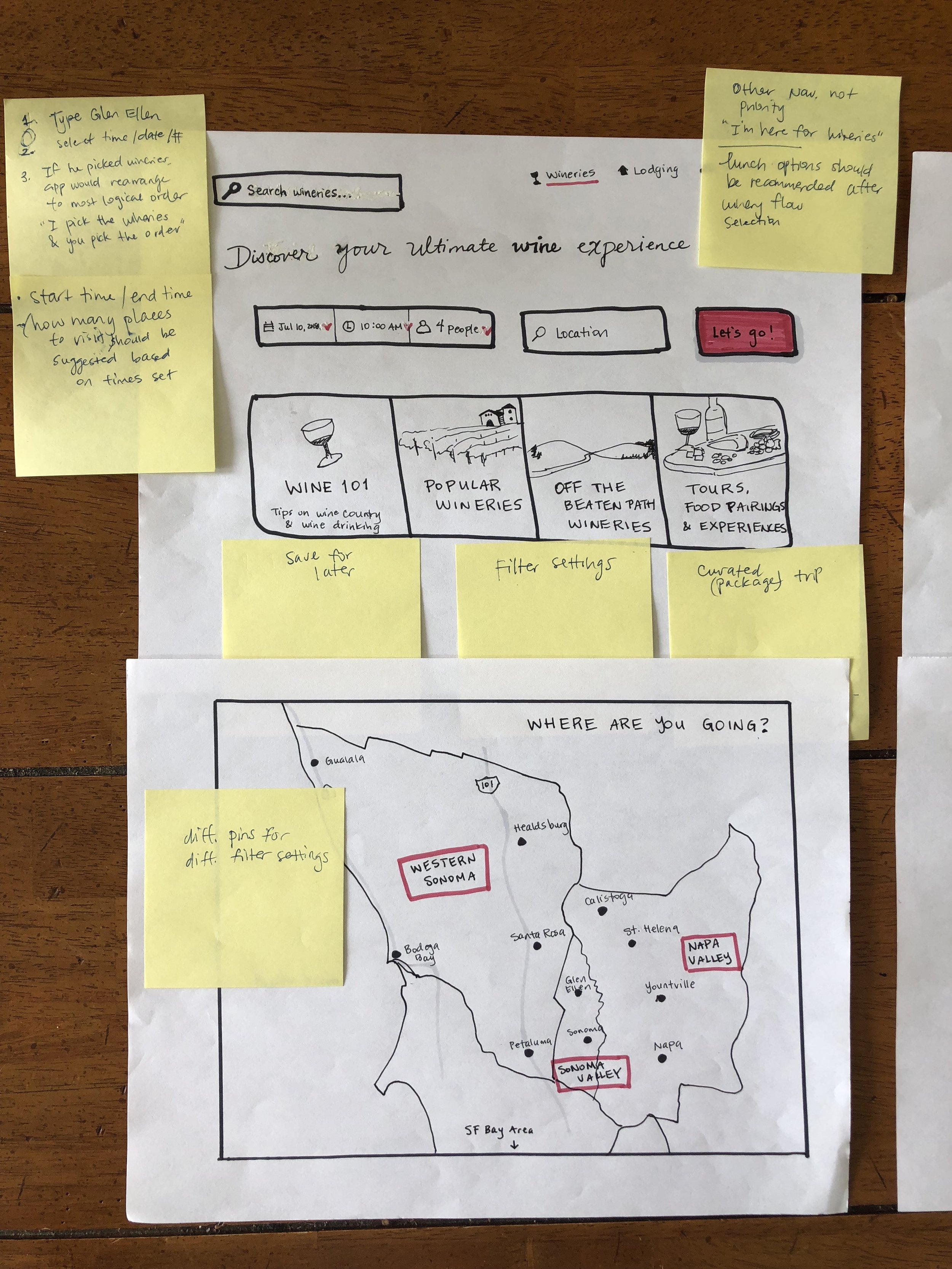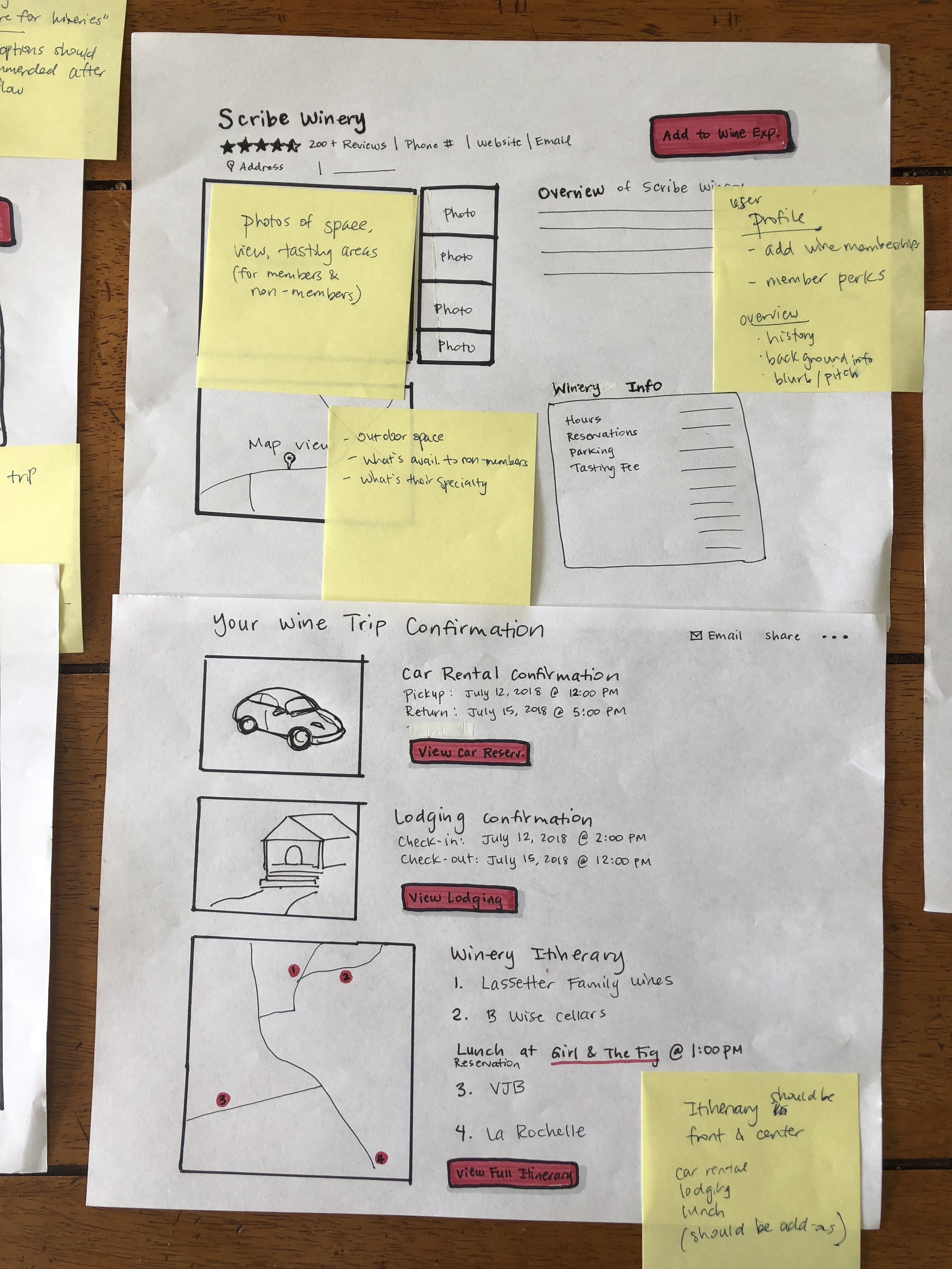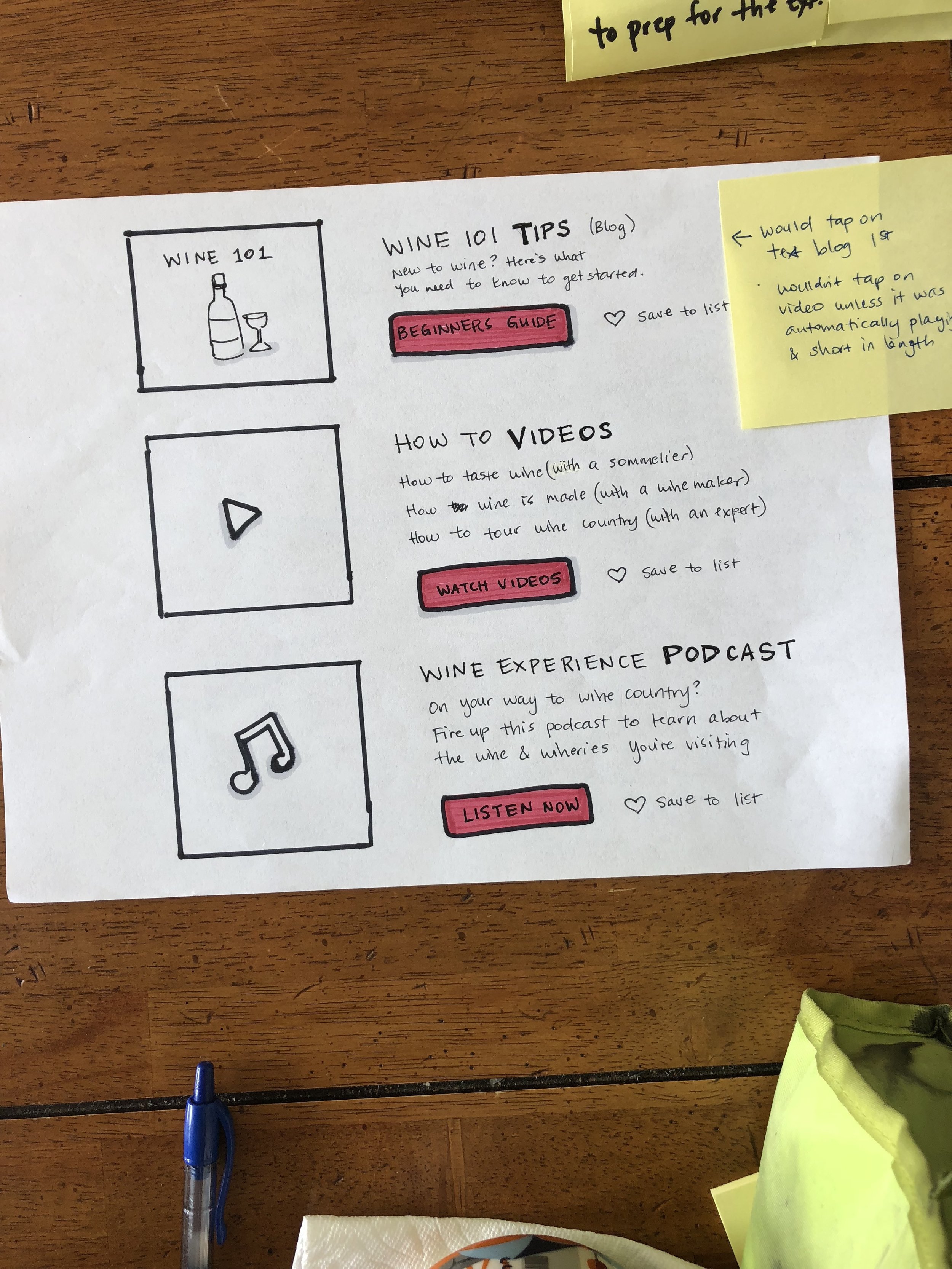
Swirl
A delightful end-to-end experience for trip planning, wine tasting, and wine education for novices

Overview
Swirl is an app that helps you plan your trip to California wine country, learn about wine, and connect you to the wine community.
Deliverables
Swirl App Key Screens
Interactive Aroma and Wine Tasting Kit
Skills
Mobile Design, Product Design, Design Research, Prototyping, Motion Design
ADVISOR
Neil Torrefiel
Timeline
8 weeks

The Challenge
The wine tasting experience can seem inaccessible for some. The vast number of wineries in Sonoma and Napa counties and the lack of general wine knowledge for new visitors can make navigating the wine region and learning about wine overwhelming.
Final Product
discovering wineries is even easier
Swirl reduces the stress and confusion from trip planning by enabling visitors to curate their search by tasting experience, location, reviews, and put together an informed itinerary.

one stop for all your trip planning needs
Select multiple wineries to create a full wine tasting itinerary and make reservations for tasting appointments, transportation, and lodging through the app.
Access the Essential Wine Guide to learn about wine through blogs, how-to videos, and podcasts featuring female sommeliers, winemakers of color, and other diverse voices in the wine industry.

experience wine beyond the winery
Extend your trip beyond the wineries by purchasing wines through Swirl’s Wine Shop, visit local wine bars and restaurants in your city, and create your own wine tasting experience at home.

View Motion Study created on Principle

Research
User interviews | journey map | competitive analysis
The Inspiration
My own wine journey started when I took a year off to live in Bologna, Italy, and studied Italian art and wine. My love for this communal, multi-sensory experience inspired me to introduce it to others.
As a UX designer, I saw an interesting space to solve user problems while also designing for delight and enjoyment.

User Interviews
To design for a better wine tasting experience, I interviewed 15 wine consumers with novice to intermediate levels of wine knowledge and are occasionally visitors to Sonoma and Napa.
I also spoke with 4 wine industry experts (a winemaker, winery owner, wine tour operator, wine business analyst) and attended an Airbnb Experience hosted by a winery to understand the consumer and winery perspectives.

User Journey Map
In mapping out the wine user journey, I discovered that visitors were most overwhelmed during trip planning and the most frustrated when they couldn’t understand wine terminology and explanations by wine staff.

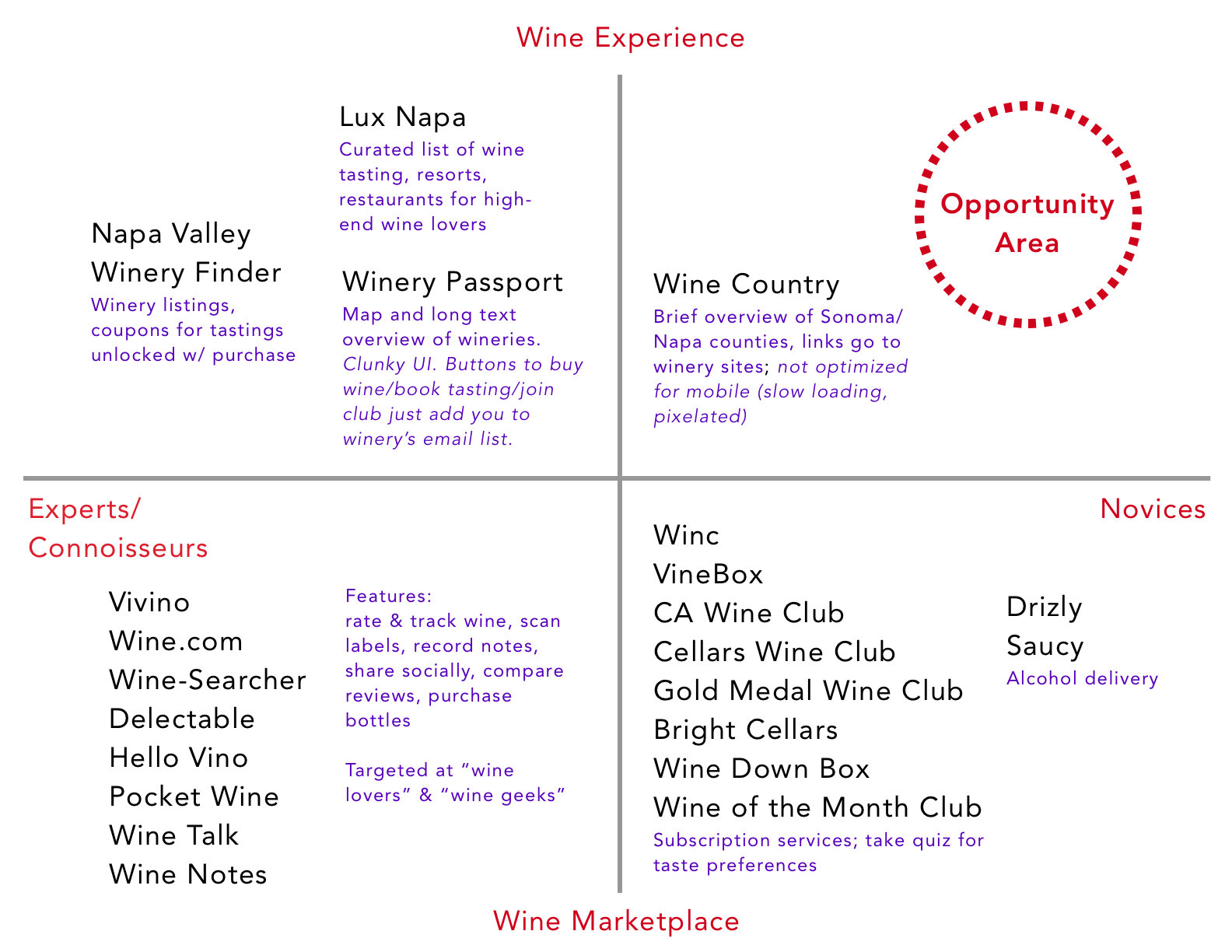
Competitive Analysis
To understand if other products address users’ pain points in the wine experience, I researched and mapped competitors on a matrix.
The wine marketplace is saturated with apps to sell and review wine, yet there are few services aimed at the wine trip experience.
Competitor UX & Information Architecture
A deeper dive into some of the wine experience apps revealed some UX flaws.
Too much information in a text-heavy format and redundant features made it harder rather than easier for users to figure out which wineries to visit.
I saw the opportunity to design a better winery planning and educational experience.

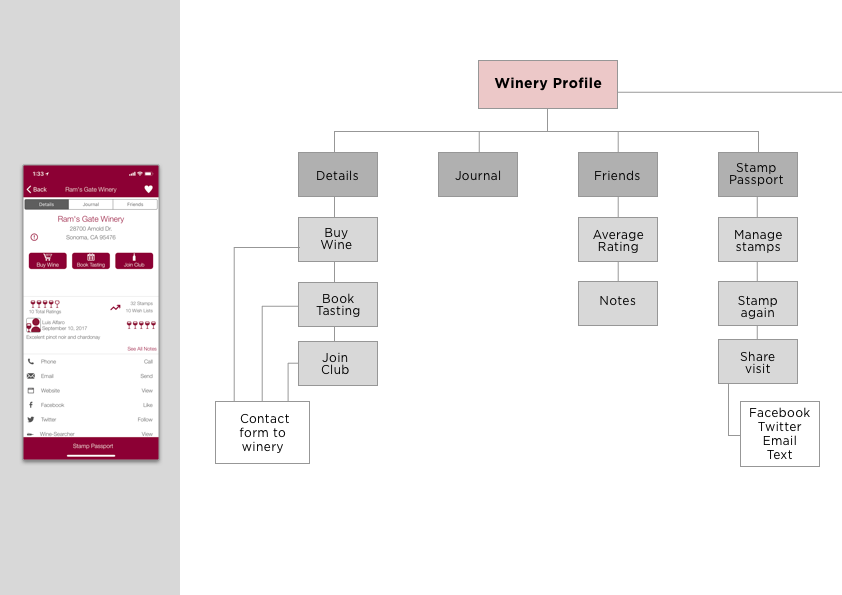
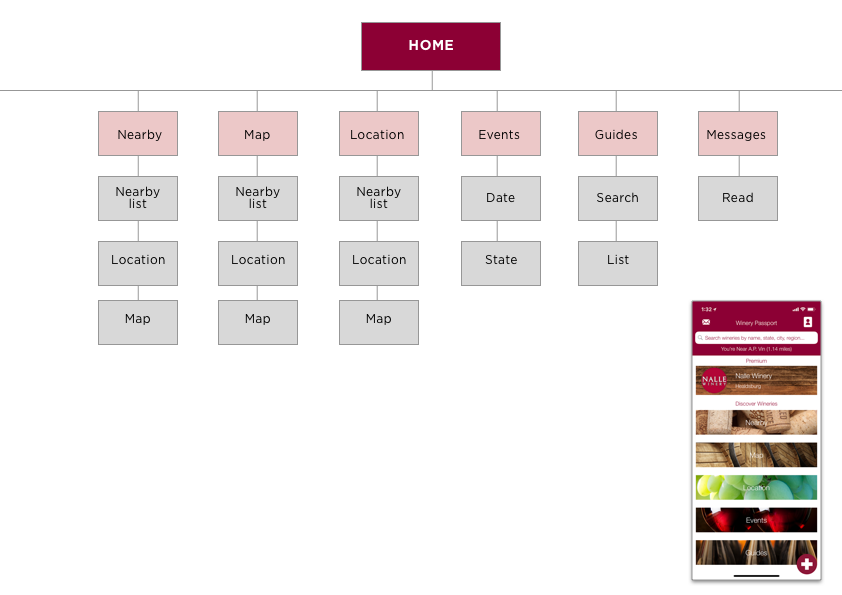
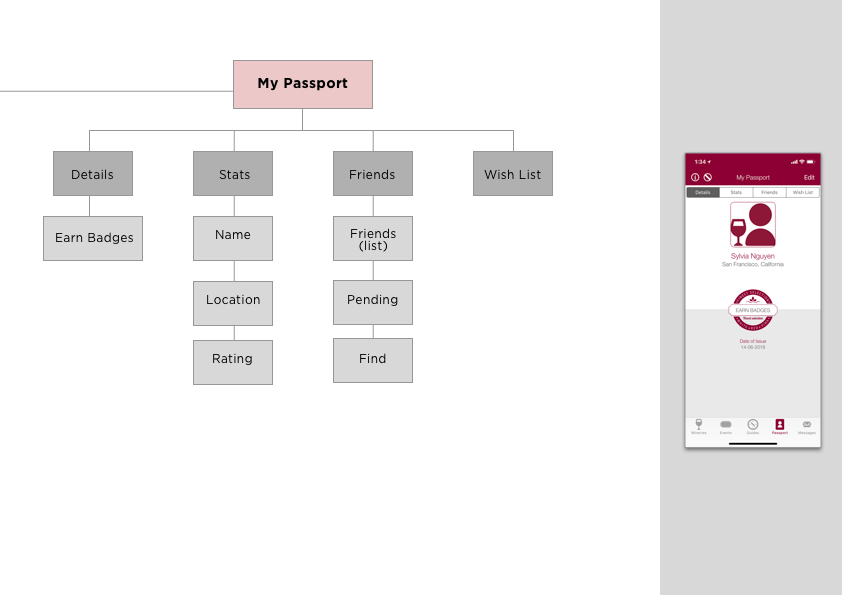
Key Insights from Research

Experience Principles
These key insights from consumers, wineries, and competitors led to the creation of four principles to guide my design for a wine experience app for novices:
Approachable
Understandable
Engaging
delightful

Process
Wireframes | user testing | Prototyping
Wireframes
Before launching into digital designs, I first drafted low-fidelity wireframes and tested paper prototypes with users I interviewed.
User Testing
Consumers prioritized the winery ambiance, reviews from their social network, and reservation capabilities as the key features they wanted in a wine experience app. Wine industry professionals wanted to see business benefits in terms of the ability to market to consumers and sell more wine.
Prototyping the Wine Experience
While I couldn’t alter the tasting experience at an existing winery given the short time frame, I designed my own interactive experience to teach users how to learn and experience wine.
I designed a Blind Aroma and Wine Tasting Test for an audience of novice to intermediate wine drinkers by using spices and ingredients commonly smelled in wine and researching tasting notes for regional varietals.
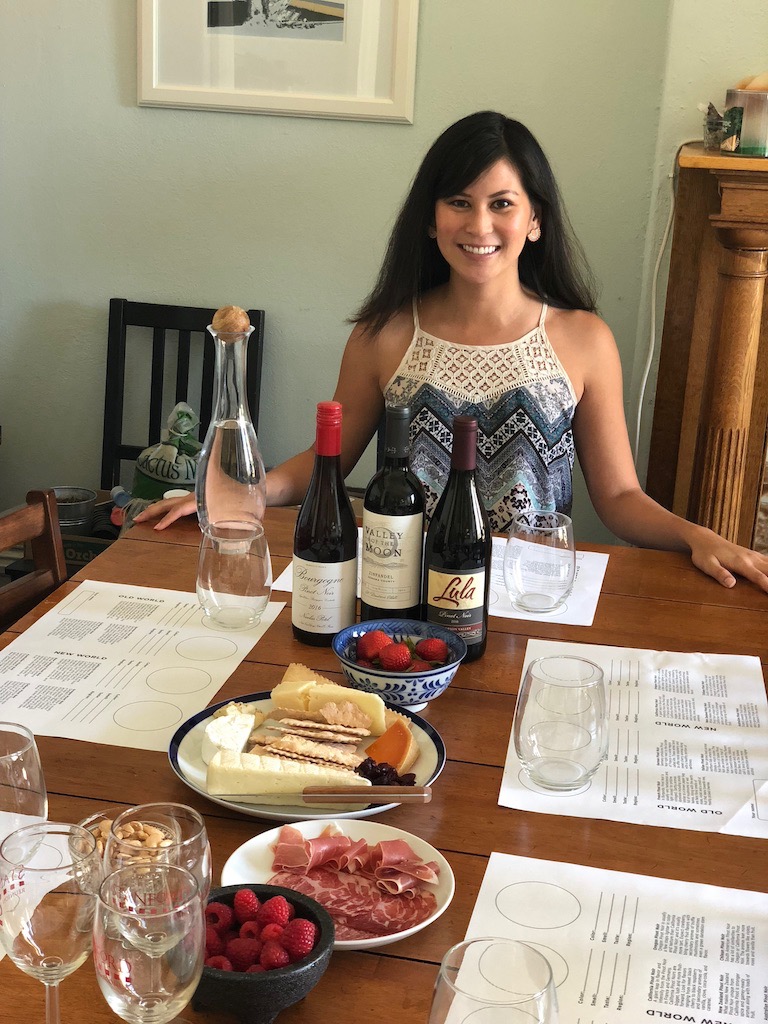

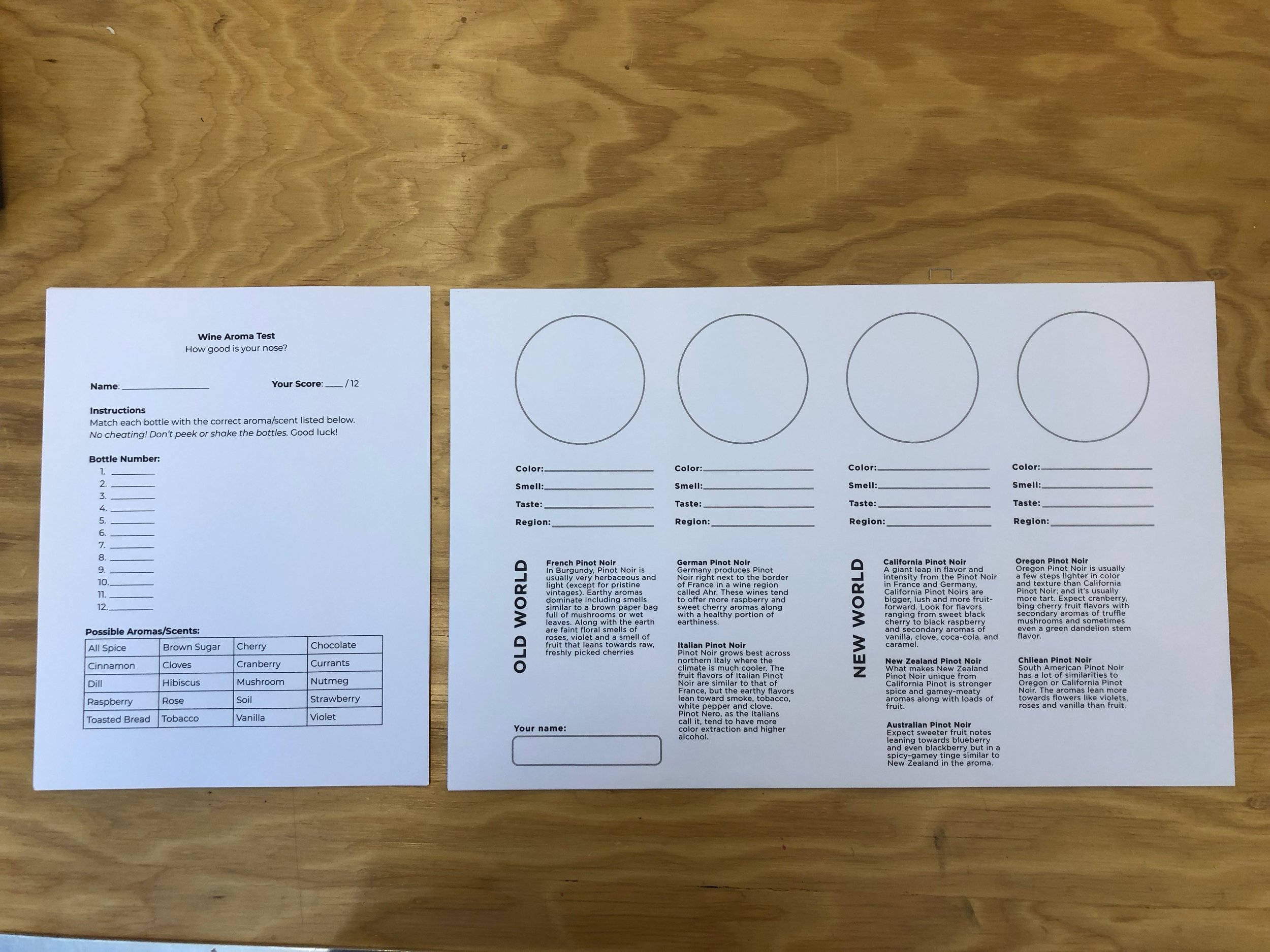
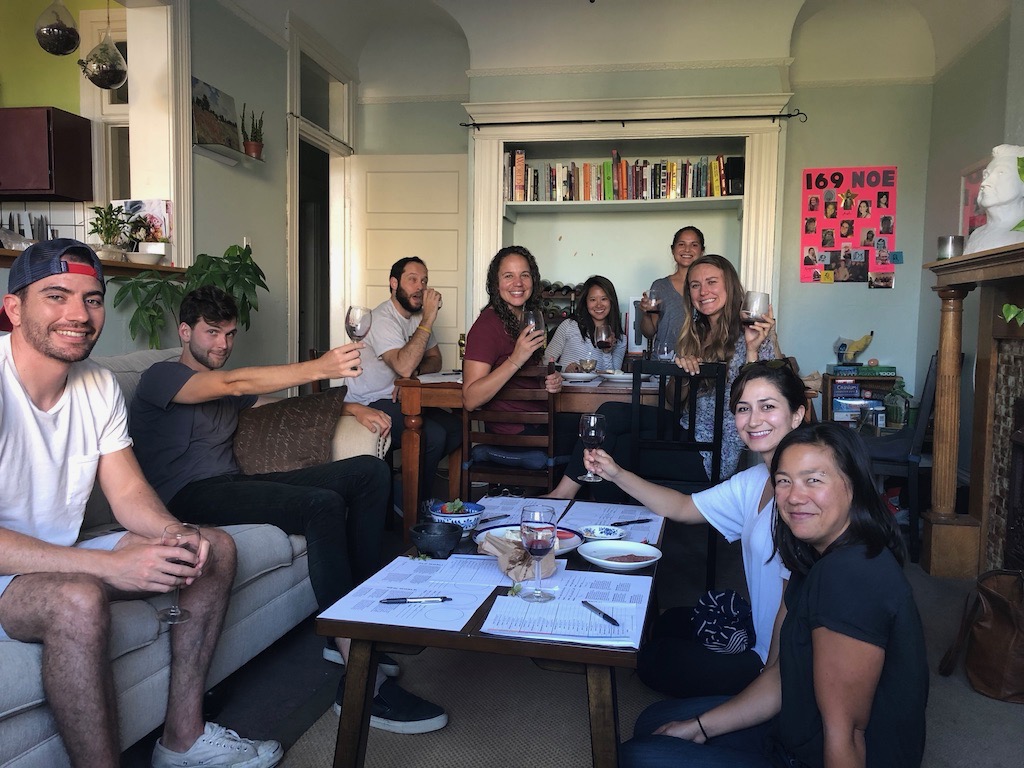
Feedback & Reflection
more Onboarding is needed
User feedback from my prototyping sessions were incorporated into Swirl’s final key screens. Upon additional feedback from faculty advisors, I would also design a step-by-step onboarding flow to gauge wine knowledge and users’ preferences to create an even more approachable and understandable experience.
interactive experiences enhance learning & engagement
The interactive Blind Aroma and Wine Tasting experience was a major high point for all the participants. I received a lot of positive feedback that it was a delightful and engaging way for users to learn about wine, hone their senses, and engage with one another. Many wish that wineries would offer a similar experience beyond just pouring and lecturing about wine.

